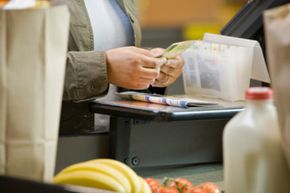There was a time in the not-too-distant past when there was a bit of a stigma associated with being on food stamps. But we've come a long way since then. With a combination of easier access to federal food assistance programs and a strong demand for such benefits since the financial crisis of the late 2000s, participation is at an all-time high. In 2008, the Food Stamp Program was renamed the Supplemental Nutrition Assistance Program (SNAP). As of late 2009, about 40 million people were enrolled in the program. That amounts to about 1 in 8 adults and 1 in 4 children in the U.S. [source: Food Research and Action Center].
To understand how SNAP benefits work, it helps to know the history of government-sponsored nutritional aid in the U.S. The first Food Stamp Program started in 1939 during the height of the Great Depression, a period of high unemployment and widespread hunger. The program was successful, but the need for food assistance in America didn't last very long. Soon after entering World War II in 1941, the U.S. began a period of booming growth and prosperity [source: Southern Illinois University]. It wasn't until 1964 that another Food Stamp Program was launched. It continues today as SNAP and reaches more people than any other federal assistance program in the country [source: U.S. Department of Agriculture].
Advertisement
The U.S. Department of Agriculture (USDA) sets the rules for SNAP, but individual states run the program. The USDA also provides all the funding for the actual food benefits, while states are responsible for about half the cost of running the program [source: U.S. Department of Health and Human Services]. The main goal of SNAP is to help low-income households buy nutritious yet low-cost food, and that's always been the case. But there are also new programs within SNAP designed to provide educational resources on nutrition and encourage participants to choose healthier foods. These programs were part of a 2008 overhaul of the program by Congress that set a new goal to address the growing problem of obesity in the U.S., especially among the poorest communities.
Qualifying for SNAP benefits depends on a number of factors, which we'll review in the next section.
Advertisement

